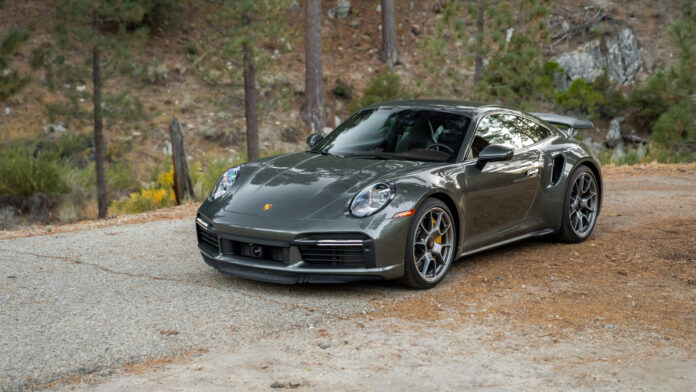The current-generation Porsche 911 Turbo S is on its way out. Earlier this year, the arrival of a new GTS kicked off the 992.2 refresh, introducing the first hybrid powertrain in the model’s over 60-year history. An electric turbocharger, an electric motor sandwiched between its engine and transmission, and a small battery pack shift the GTS formula, simultaneously providing us a glimpse at 911s to come.
Given the performance benefits of hybrid power, 59-horsepower more than its predecessor in the GTS’s case, there’s a strong possibility that some of this tech will work its way into what has always been one of the most potent 911s. There are more rumors, too, with some speculating that Porsche will offer a rear-drive variant equipped with a manual transmission, which, given just how jazzed the carmaker has been about manual transmissions, wouldn’t be surprising. Take the manual-only Carrera T and its many shift pattern stickers as an example.
However, before a wave of new tech and what might be a decent shakeup of the model sweeps away the current Porsche 911 Turbo S, I’m taking a final look at what, over the years, has become the 911 that truly does it all.
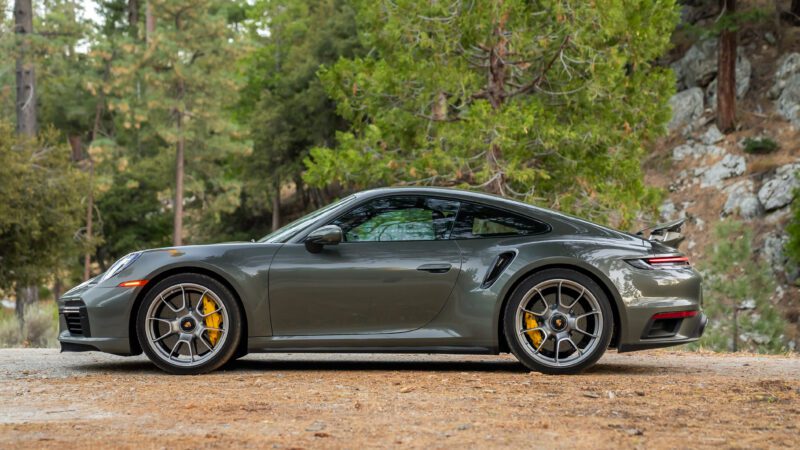
Versatility has always been a main ingredient of the 911 formula. Ample cargo and interior space, a compliant ride for long drives, and mechanical durability ensure you always get there are integral to it. And while you’ll still find these core tenets in the current Turbo S, its performance stats suggest it’s not content with chasing sports cars. Like its predecessors, this 911 wants to compete with the prancing horses and raging bulls of the world.
At its core sits a 3.8-liter flat-six with two turbochargers strapped, developing 640 horsepower and 590 pound-feet of torque. For those keeping score, that’s nine horses and a whopping 147 lb-ft more than the recently departed Lamborghini Huracán Tecnica. It’s also 60 hp and 37 lb-ft over the 991.2 generation it replaces. Like every iteration since the 993 Turbo, it sends power to all four wheels, in this case, via a model-specific eight-speed PDK. It sprints to 60 mph in 2.6 seconds, blitzes through the quarter-mile in 10.5, and tops out at 205 mph.
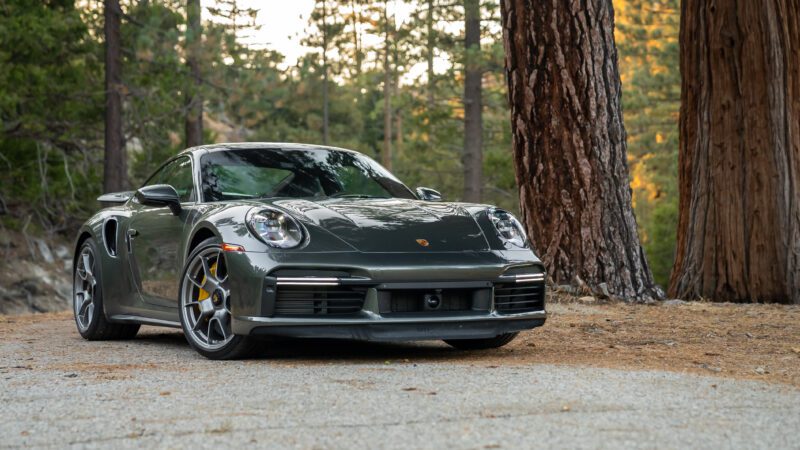
Yet as impressive as its stats are on paper, what sets the Porsche 911 Turbo S apart is just how well it deploys that performance on a winding back road. Clicking out of Normal mode, through Sport, and into Sport+ sharpens its throttle response and opens the flaps of its optional Sport Exhaust. At the same time, an available PASM Sport suspension squats its ride height by 0.4 inches compared to the standard system.
Its personality shifts, but not its approachability. Leaning on the throttle at first isn’t as intimidating as you might expect. At low revs, its flax-six remains pretty docile. However, work your way into the middle of the tach as boost pressure builds and its acceleration shifts from progressive to explosive. This isn’t turbo lag in the traditional sense, as it’s merely transitioning from very fast to overwhelmingly fast. Yet a tug of the right paddle results in a near-instant upshift, which, thanks to closely-spaced gears, drops you right in that boost sweet spot.
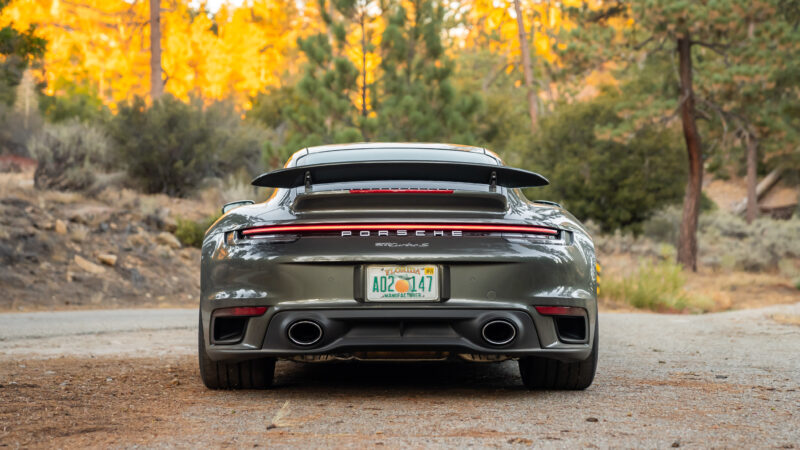
Even as you build courage and lean more on the right pedal, there’s never a sense that the Porsche 911 Turbo S is looking to bite back. It encourages you to start feeding power earlier each time you rocket out of a bend. A new transfer case makes this possible, as it can now route up to 368 lb-ft to the front wheels. Coupled with the traction benefits of a track that grows by 1.7 inches up front and 0.4 in the rear, along with wider 255/35 and 315/30 tires, the Turbo S will happily claw its way out of corners without drama. As a result, you can hustle it up your favorite winding road using a point-and-squirt approach. Wherever you aim its nose, it will follow.
Despite its limits being practically untouchable outside of a track, you still get plenty of feedback from its steering and chassis at all speeds. While turning the wheel results in a quick response from the front, it doesn’t dart around like something with a GT in it’s name might, nor does it punish you with an overly firm ride to deliver such excellent handling. It’s planted and composed but never harsh. And while its carbon ceramic brakes shine with their bright yellow calipers, their performance is consistent on a twisty road and the daily commute.
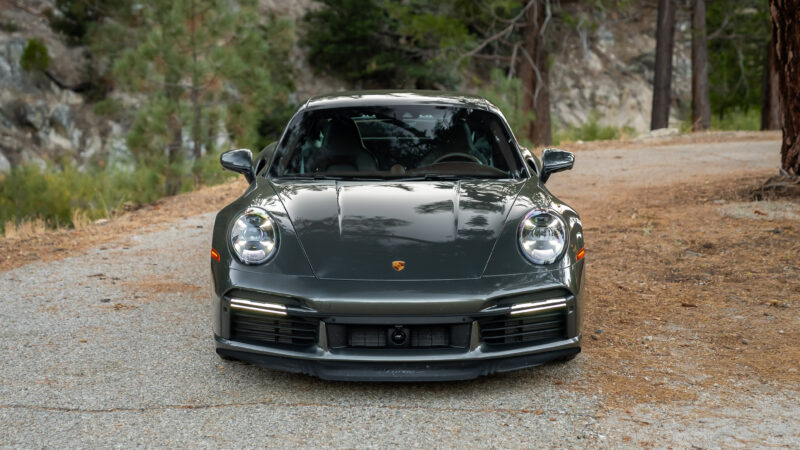
This brings me to the other half of this car’s persona, which makes it a truly unique machine. Recall the versatility aspect I mentioned earlier because that’s this car’s secret weapon. While the Porsche 911 Turbo S is genuinely supercar quick, it can easily slip into the grand tourer or daily driver role. Dial the drive mode selector back down to Normal, and its suspension softens considerably. Its deployable front splitter folds away, significantly improving its ground clearance, while its rear wing lowers into its low-drag position.
Its eight-speed PDK moves through gears imperceptibly, while its valved exhaust allows only a hum to permeate the cabin. Skip the optional carbon-fiber buckets and stick with the standard 18-way adjustable set of Sport seats, and the Turbo S makes for an ideal car for a trek across the country, even if it isn’t a Cannonball run.
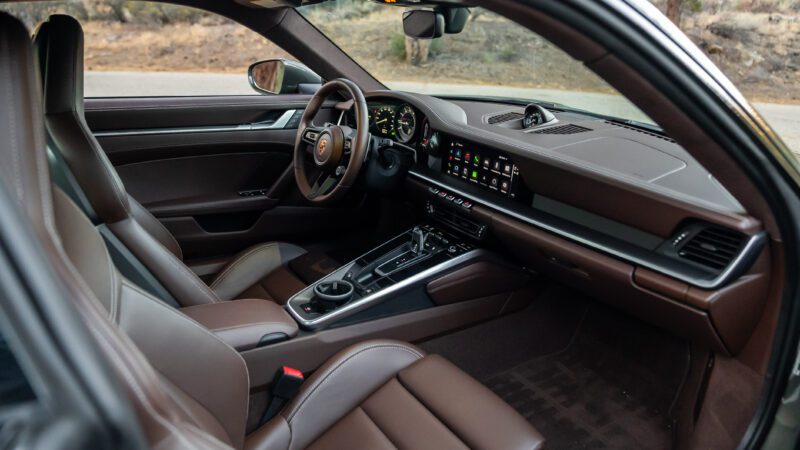
A GT Sport steering wheel comes standard, yet despite being reminiscent of what you’d find in a GT3, it doesn’t detract from what it otherwise an elegant and spacious cabin. This tester’s Truffle Brown interior with Chalk contrasting stitching is gorgeous, nicely complementing the Aventurine Green exterior shade. Its rear seats are as tiny as ever, fitting small children at best, or more accurately, any leftover luggage that can’t be stashed in the nose.
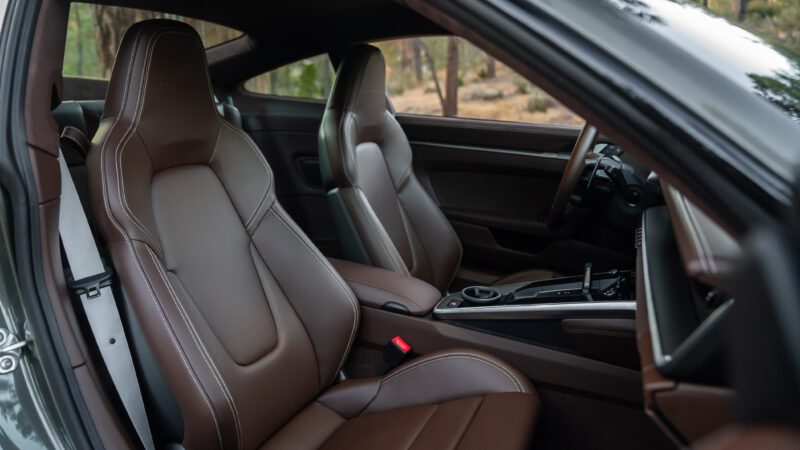
This go-anywhere spirit aligns with this car’s styling because, despite its deployable rear wing, wide arches, and low stance, the Porsche 911 Turbo S blends in. Given that all new 911s benefit from broadened bodywork, the Turbo isn’t as distinct as it once was. While this would allow it to serve as a daily driver as part of a larger collection, it’s quickly moving into if-you-know-you-know territory, which, given this car’s $232,050 starting price, might not always be a good thing. As-tested, this particular example comes in at $249,740.
With potentially significant changes on the horizon, the 992.1-generation Porsche 911 Turbo S bows out as arguably the best iteration yet. While potential electrification could further boost its performance and supercar appetite, this outgoing model represents the 911 Turbo formula at its best.
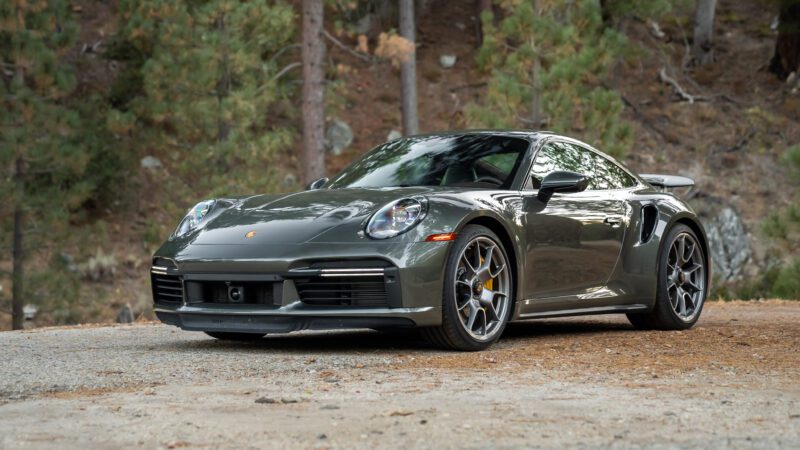
From its formidable performance on a back road to its comfort and daily usability and its elegant, spacious cabin, it’s as versatile as a sports car can be. And while its looks may not be as flashy as you’d expect from a car starting at close to a quarter-million, its ability to blend in invites you to rack up the miles. Although it’s on its way out, the Turbo S remains the 911 that truly does it all.

